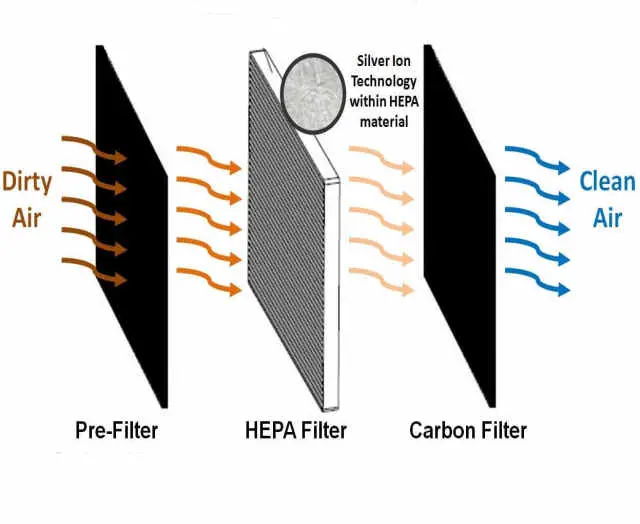Lots of people wonder: how do air filters grab dust from air? It’s not just “filtering”—5 simple mechanisms work together. Let’s break them down for you.
Air filters trap dust via these 5 plain-English ways:
- Electrostatic Effect: “Opposites Attract”
Like a rubbed balloon sticking to your shirt—filter fibers and dust have tiny electric charges. Opposite charges pull dust to fibers, and it sticks (no crashing needed).
- Interception Effect: “Too Close to Slip By”
If dust is a certain size and drifts near fibers, it can’t squeeze through (like a ball too big for fence gaps). When the distance from dust’s center to fiber is smaller than dust’s radius, fibers catch it.
- Inertial Impaction: “Can’t Slow Down, So It Crashes”
Heavier/fast-moving dust doesn’t stop easily. As air flows through the filter, dust keeps going (inertia), crashes into fibers, and settles. Bigger/faster dust = more crashes.
- Gravitational Effect: “Gravity Pulls It Down”
Gravity tugs dust downward. As dust passes through filter fibers, gravity pulls it onto fibers—so it settles instead of floating out (faster than dust on your desk).
- Diffusion Effect: “Bouncy Tiny Dust Gets Trapped”
Super tiny dust bounces wildly (scientists call it Brownian motion, like a hyper kid in a crowd). More bouncing = higher chance of hitting fibers. Smaller dust = easier to trap.
How Dust Moves (And Sticks)
Dust in air moves 3 ways: floats with air (inertial), bounces randomly (Brownian), or is pulled by forces (gravity). When dust hits fibers, “van der Waals forces” (molecular stickiness) make it stay.
Dust gets multiple chances to hit fibers—each hit sticks, and small dust may clump into bigger clusters that settle faster. That’s why air stays dust-free.

Why Some Dust Is Harder to Trap
Inertial and diffusion effects matter most for dust size:
Bigger dust: Moves with air, but inertia makes it crash into fibers—easier to trap.
Tiny dust: Bounces more, hits fibers often—easy to trap.
Key rule:
Dust <0.1 μm (super tiny): Moves via Brownian motion—easy to trap.
Dust >0.3 μm (bigger tiny): Moves via inertia—bigger = easier to catch.
Dust 0.1–0.3 μm: Trickiest—neither effect works well.
That’s how air filters trap dust—5 simple ways, no confusing science. Have questions? Reach out to our team for plainer explanations.

